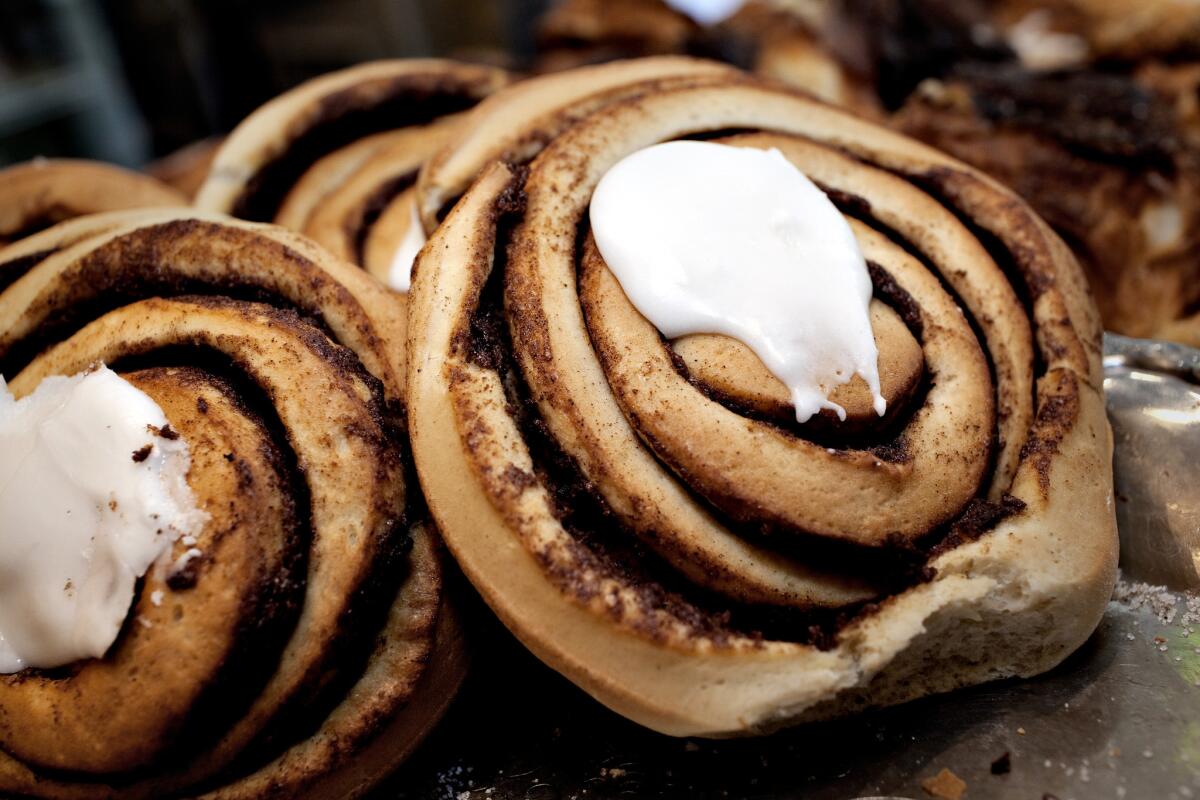EU to Denmark: Drop that cinnamon roll! Or at least the spice level

- Share via
The European Union “nanny state” strikes again, this time at a breakfast favorite in Denmark.
New EU food safety rules limit the amount of cinnamon that can be used in pastries because of new concern about excessive consumption of a naturally occurring trace chemical compound called coumarin.
Studies have linked high coumarin intake to liver damage in a small number of sensitive people, the Euro Weekly News reported.
EU rules for “everyday fine baked goods” set the amount of traditional cassia cinnamon to 15 mg per kilogram [.0005 ounce per 2.2 pounds] of dough for the coiled buns known as kanelsnegler in Denmark, kanelbullar in Sweden and skillingsboller in Norway.
But only the Danish cinnamon rolls are subject to the spice content regulation. Sweden has designated the pastry as “traditional and seasonal” because of its high popularity at Christmas and during winter months, which allows more than three times the cinnamon content -- 50 mg [.002 ounce] -- on the presumption that fewer are consumed over the course of a year. Norway, which isn’t an EU member, reacted to the new coumarin concern by advising that “heavy users of cinnamon should limit their intake.”
“It’s the end of the cinnamon roll as we know it,” huffed Hardy Christensen, the head of the Danish Bakers Assn., the Daily Telegraph reported.
Anders Grabow, another bakers association official, said he understood the government’s aim of protecting consumers, especially children, from too much coumarin, if it proves to be a danger to liver development or function.
“But if a child that young eats that much pastry every day, they’re on the fast track to obesity and cinnamon is the least of their worries,” Grabow said, calculating that the sugar content would be the more worrying factor for a 30-pound child eating multiple cinnamon buns every day.
Danish bakers have explored the possibility of using Ceylon cinnamon, which has a lower coumarin content than the cassia type, Grabow said. But the Celyon variety has a different taste and loses much of its flavor in the baking process, he told the Guardian newspaper.
The bakers group is at work assembling data on cinnamon consumption in Denmark, Grabow said, in the hope of persuading the Danish Veterinary and Food Administration to reclassify the buns as “traditional and seasonal” so they can continue baking them according to the favored, centuries-old recipe.
Twitter: @cjwilliamslat
More to Read
Sign up for Essential California
The most important California stories and recommendations in your inbox every morning.
You may occasionally receive promotional content from the Los Angeles Times.











